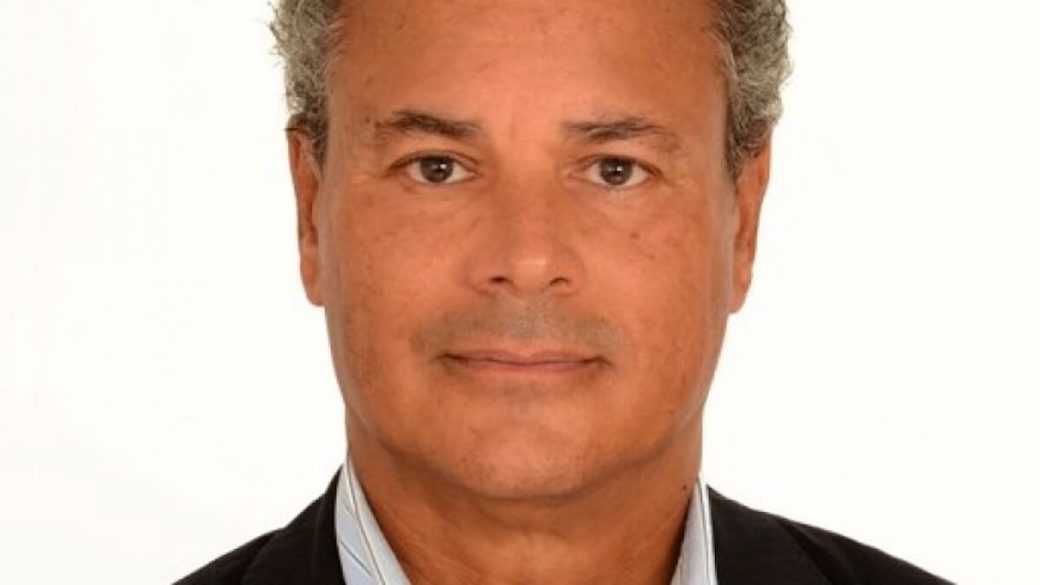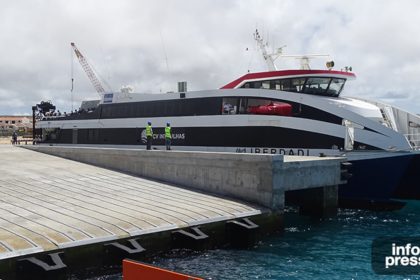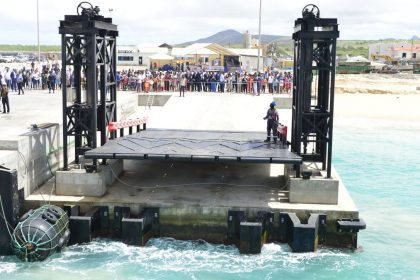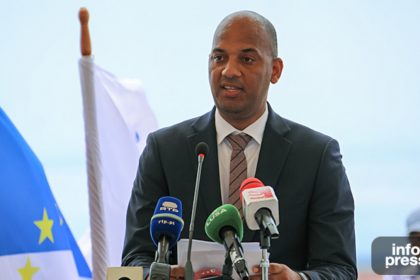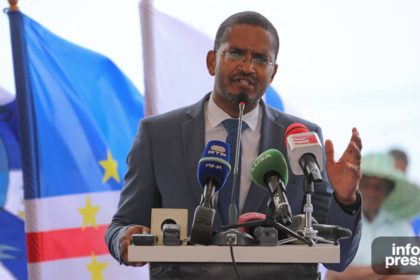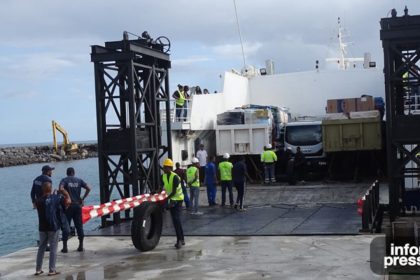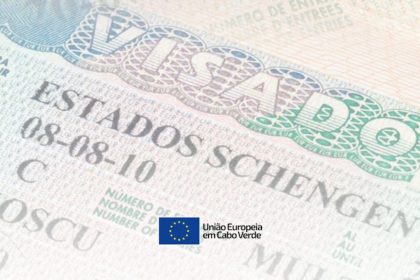Cape Verde presents itself as a developing tourist destination, having demonstrated a marked evolution in recent years.
The island of Sal (in 2019, with a drop of 3%; 12,500 less tourists) and Boavista (17%, more than 35,000 tourists) contributed to this growth, as a result of the attention and investment of vertical and vertical investors and tour operators. with an offer essentially aimed at “beach tourism”. Today , this push strategy is insufficient and unable to generate flows to other locations in the archipelago. It is imperative to guard against this situation of dependency, implementing a pull strategywhere the bet is direct access to the final consumer, showing him a diversified Cape Verde, offering him several alternatives to “sun and sea” in the form of more specific circuits of nature, adventure, history, culture and sport, possibilities in that the country is lavish. And proof of this is the marked growth in other islands, where tourism of a different nature is increasingly important: Santiago (17%; +10,400 tourists), Santo Antão (37%, +10,000 tourists), Fogo (26%, +1,300 tourists), Maio (80%, +450 tourists) and Brava (62%, +350 tourists); São Vicente without significant variation (+ 3%, 1,250 tourists). And these results without having organized the Tourist Product or committed to its Promotion.
Between these two realities, there is an opportunity, if not mandatory, to build a tourism sector that is more independent of external factors, increasingly inclusive, combating inequalities, redistributing the benefits of the applied resources more equitably. In this way, all regions will be allowed to enjoy the direct economic effects of tourist activity, as well as indirect ones, of a social and environmental nature, which, due to their transversality, induce related sectors.
Once the facts and tourist potential of the country were recognized, institutional measures were taken firsthand, with the reorganization of the functions of existing structures and the creation of the “TdCV-Turismo de Cabo Verde” complemented by the “Master Plans” of Santiago, Fogo and Brava, Northern Islands (São Vicente, Santo Antão and São Nicolau) and Sal, whose conclusions and guidelines, not being new, corroborated the need for diversification of destinations taking advantage of the natural, historical, cultural and social conditions of the islands . Associating them with a set of new tourist products and inherently new sources of tourists, if not by countries at least by visitor profile, is the next step.
From the description above, launching the regular debate with the various players in the sector to collect contributions for a more comprehensive and consensual strategic vision and once the vectors that reinforce our advantages have been identified, the “Cabo Verde Tourism” Mission in the long term it is geared towards 1. Creating a holistic intervention capacity in the sectorraising awareness and involving public partners – namely Municipalities and other public entities – ex. IPC-Institute of Cultural Heritage, IEFP-Institute of Employment and Professional Training, IGQ (PI) -Institute of Quality Management,… – and private (Air and Maritime Transport Companies, Sector Associations, Operators and other national and even foreign organizations ), uniting populations and giving them a clear vision of the joint path to be followed and the objectives to be achieved, in a national design, having as a background the guidelines determined by the Master Plans 2. Stimulating Tourism as a central activity in the country’s general economy making it an increasingly attractive destination, integrating all available, tangible and intangible resources 3.Diversification of the Tourism Product and destinations respecting the socio-cultural reality hybrid (Creole) and praising the integration in a challenging natural environment 4. Promotion of a tourist sector healthy and safe, resilient, dynamic, qualified, participative, inclusive and doer, in short, of quality 5. Attraction , due to the combination of the drivers mentioned above, “wrapped up” in a more coherent tourist communication and a more sophisticated promotional message, of a growing and varied number of tourists 6. Improvement of the country’s economic, social and environmental indicators , reducing regional asymmetries in the construction of a fairer and more balanced tourism.
CAPE VERDE TOURISM, THE “ZERO” MOMENT
Good tourism is, above all, respect for resources and the affirmation and preservation of natural, cultural and historical heritage as an element of identity. Its success is directly linked to the way a country understands and values this heritage and how it relates to it. And the “TdCV-Turismo de Cabo Verde”, national authority and regulator of tourism, has this clear perception, sustained both in the strategic documents already prepared and in the technical and management skills and the sensitivity of its staff. We know that the diversification of the national Tourist Product is the formula that makes the sector stronger, generates more revenue and its better distribution, that is, truly sustainable, escaping a reality that is hostage to the monoproduct, geographically concentrated and exporting our income.Cape Verde needs to have the reins of its destination in its hands and clearly bet on the possibility of different tourism taking advantage of the generous social and environmental diversity of our archipelago. This is the moment … A moment, which although of crisis, is also ofopportunity .
We could say that the world stopped waiting for Cape Verde .
This pause allows, with those who have the clairvoyance to observe above and beyond the “dust of the coronavirus”, to go beyond the conventional of our tourism, also changing the paradigm of communication and message that has been unilaterally conveyed and the narrow understanding that Cape Verde it is a “sun and beach” destination, something massified and in some ways already unsustainable. The moment, therefore, is one of reinvention .
The “quarantine” time can and should be used in the planning and realization of lasting tourist assets, “infrastructure” of a whole new reality that definitely sets the pillars of Cape Verde tourism supported by a genuineness that transmits our Culture, our History, our Experience as a unique people (because that is what we are, effectively) that exists in an adverse natural environment but at the same time of great beauty and contrast.
Ensuring that we will be prepared for whatever the future holds will only be possible by calling the Municipalities to account , whenever necessary in intermunicipal communion, for the constitution of organic units (council and tourism office) that have a clear strategic vision of the benefits socio-economic, landscape and environmental conditions that they may obtain. It will be enough for them to implement the “commandments” already defined in the Great Options of the Strategic Plan for Sustainable Development-Tourism (GOPEDS-Turismo) , embodied in the Master Plans where you can read everything you need to do. Its deep and mature involvement, uniting Tour Operators around it, who truly know the main attractions of their region, will determine and build, with the funds available in the Tourism Fund, the necessary infrastructure for the type (s) of Tourist Product (s) consistent with each one. their islands or municipalities. But they should not stop there. The creation of Destination Management Organizations (DMO) , giving content and preservation to the product, and Destination Promoting Entities , the marketeersplaces that will promote regional attributes, are an inescapable, essential and I would say immediate task, because there is no time to lose. This network will constitute the core of the national tourism organization to which the “TdCV-Turismo de Cabo Verde”, associated with other entities with content, will provide support by disseminating the strategy, monitoring the execution, unifying the action, giving it coherence and visibility in tourist-emitting markets, creating the foundations for tourism to match the traditions and idiosyncrasies of the people of these islands. At least we owe them that. And believe me, our populations will know how to respond, being, quite simply, themselves in their daily lives.
In this line, “TdCV-Turismo de Cabo Verde” has a well-defined vision for the future of Cape Verde tourism.
More than repeating the number of tourists that we intend to reach, which can be volatile as we can see now, we will not be far away if we point out as “the establishment of a solid Digital Promotional Platform for Destination” for the next 3 years , “Installation of a Tourism Knowledge and Intelligence system” , “construction of lasting Tourist Assets” , “Diversification of Destinations integrating Nature, History and Culture” , “Deconcentration of Issuing Markets” , “Combating Seasonality” , “ Promotion Better Accessibility to the Country and Mobility within the Territory ” , the“Valuing the Territory, Heritage and Cultural Legacy” , “increasing the Quality of Tourist Units and Service” , “Qualifying and Valuing Human Resources” and “stimulating Innovation and Entrepreneurship” . These, yes, structural conditions for greater resilience in future shocks and better distribution of income and increased employment.
To these challenges are added the understanding of social and technological phenomena that we must try to understand because they impact the perspective of tourism and define the way travelers research and process their leisure choices: the “new communication technologies” , the “Importance of social networks” , “the purchasing power of a young generation and their occupational preferences” , “young couples without children and great mobility” , “greater longevity and senior tourism” and “nature tourism with environmental concerns ” . We will not be able to rule out trends that are still residual but due to the development of communication technologies, such as the guaranteed implantation of a future“Digital tourism” : individuals with high mobility, uprooted and available to stay for a few months where the good climate and relaxed atmosphere allows them to exercise their digital activity in teleworking.
Aware of all this problem, the “TdCV-Turismo de Cabo Verde” has organized itself in order to provide itself with the resources that allow it to endorse to the tourist economy a guide of procedures for this route while maintaining vigilance over competing economic systems, anticipates movements and advocates measures for adaptation, protection and development of our business ecosystem.
CAPE VERDE TOURISM, A NEW MOMENT
The recovery, as it seems obvious, to return quickly to the 819,000 tourists of 2019 (approximately 760,000 in the international market and 60,000 in the domestic market), will not be done with segments, for now of niche and yet to be built. It will certainly not be Nature, Historical or Cultural tourism that will bring us to recovery. It will be done with the return of “mass tourism” , for the same reasons and with the same actions of those who built tourism in Cape Verde, as we know it: the big operators, vertical and with an offer almost exclusively directed to the islands do Sal and Boavista. And thankfully. This is also an important tourism that takes place in Cape Verde.
All businesses are “Trust”. Tourism even more, due to its scope and intersectorality. In this particular moment, “Trust” lies in destinations that prove to be safe. Not only socially, as Cape Verde has proven it before, but now it is also health-safe. At least for a while. We will have to prove it by reinforcing hygiene and sanitary safety procedures throughout the circuit, from entering the plane in the country of origin to returning, and not just in tourist establishments, adequately communicating our understanding and commitment to “Safe Tourism” “. The certification of establishments (tourism enterprises, travel agencies and tourist entertainment companies), although optional and on request, will be an inevitability for those who want this “plus” of recognition with the inherent advantages in terms of the market. In any case, the central question in the international recovery will be, I believe, how air transport will recover, a sector that is experiencing enormous difficulties. What are the costs of solutions in terms of operational and health security? Which chess will result from the inevitable disappearance of some lines and companies? This is perhaps the main unknown for the speed of recovery in tourism. Especially for a country penalized for insularity, therefore without clientele from adjacent countries, and in addition archipelagic (making domestic tourism more expensive and difficult),whose effective (Europe) and potential (USA and Brazil) sending markets are found precisely in the most affected regions in the world and it is not easy to attract visitors from other regions of the globe.
Other than that, the difference between AC and DC is that the “non-mass” tourism market will appear strengthened, more available to observe other proposals, which fortunately Cape Verde can also offer. It is time to launch the first structured “Internal Tourism” initiatives . But for it to be offered it must exist. We have to move on the supply side. And it will exist as soon as the players involved in its construction get involved that this is the path that we must follow very quickly; that of tourism that we can design, package and sell ourselves by architecting an authentic and more sustainable product made up of several small and medium units spread across our islands. Nobody will come to do it for us. That’s it,taking advantage of the moment when the world stopped to give us time , which looks at “TdCV-Turismo de Cabo Verde”. And there are already praiseworthy initiatives in Santo Antão (“Raízes” Project), São Nicolau (“Caminhar” Project) and Fogo, with the first steps of the “COSPE” Project, which demonstrate that they have arguments to quickly move up to a level of non-negligible relevance and capable of promoting a type of alternative and widespread tourism in the archipelago. They are examples, that dispensing with “pseudotribal dances” pretending our funaná or other artificial and plasticized manifestations of our culture, should be valued by the local and tourist authorities and this knowledge reproduced in other islands.
More than corresponding to the recovery, in “TdCV-Turismo de Cabo Verde” we want to prepare for the future. Because this one is sure to come; with or without pandemics.
The conditions for that we have them with a wide variety; whether climacteric, geographic, orographic, environmental, historical or cultural:
From “Adventure Tourism and Nature” – for the design of trekking and hiking routes with international signage and their registration on world platforms of trails , climbs, interesting Natural Parks, to which we must give tourist substance and preserve, a maritime coast full of hidden areas secrets and charms, etc… -,
going through “Historical and Cultural Tourism” finding the universal trait that unites us to other systems, upstream and downstream, making us international and historically relevant, interesting and “tradable” – of the routes and museums, of the “Discoveries to Democracy” , from “Slavery to Mestizo”, from “Darwin to Gago Coutinho”, “From the scarcity of Rain to Emigration”, from “Tabanka à Morna”, “From Cachupa to Caldo de Peixe”, “From Coconut to Crafts” and other facts that we just suspect,
“ Social Tourism” , “People and Affections” and “Positive Stories and Urban Art”
the “Event Tourism” , an embryonic niche that leads us not only to food festivals, the creative industry shows (music, theater, cinema, …) and sporting events but also for congresses and incentives industry
and to the evidence of the underutilized potential of Bathing and Nautical Sports and Sport Fishing , we have an extensive wealth of possibilities to explore.
This is the real “post-covid” challenge and, ultimately, in a dreamed future, the crossing and integration of all these products extending the average stays and superior profitability of the assets.
If there is a matter where everyone will be in agreement, it is that this crisis brought the advent of “digital” . As if it were something new. If some countries had long ago realized the power of online communication, where, for example, Portugal uses it to the highest exponent with extraordinary results (but not only for that reason), in Cape Verde we have been slow to act. Not only have companies not valued the reach of this tool, but the tourist authorities themselves have not done so, nor have they sensitized the market to its importance. Although it is an indispensable channel these days, for all aspects of the tourist business, Travel Agencies were the main victims of technology; through own fault. This “pause moment” is, especially for them, an opportunity for conversion.
Today, tourists are looking for not just a trip or accommodation, but an entire experience of adventure, culture or gastronomic tasting; or all in the same package where travel and accommodation are important elements. That is why the sector’s recovery process is more complex after the traumatic experience of the “covid-19” pandemic. It is necessary to reinvent Cape Verde’s tourism. Let us therefore be humble and cooperative.
From the tickets that are no longer sold over the counter to the potential for the operation of Internal Tourism packages , the immediate market for the next 18 months, goes a mandatory step, aligning carriers, accommodation, restaurants, local tourist entertainment and tourist guides. This integration is inevitable because nothing will be as it was before. The success of the sale will depend on the type of product they place on the market, their online and offline visibility, the quality of their promotion, the construction and optimization of their websites, their presence on international booking platforms, their relational capacity and their expertise in social media and email marketing and, not least, the quality of servicethat pay. It is important that companies look for skills in these areas by hiring qualified technicians and training those who show merit and competence. In addition and looking at the future alongside this, I could mention other technologies that draw attention to national attractions, such as 3D mapping of places of tourist interest, virtual visits to monuments and museums (as the IPC-Instituto do Cultural Heritage) and augmented reality, would place Cape Verde on a more restricted level.
For our part, “TdCV-Turismo de Cabo Verde” is structured and programmed to bring the perspective and anticipation of international trends and preferences, to guide the creation and organization of tourism products, to improve international visibility promoting it offline and online , to increase the quality of operation of tourist units and the environment in which they operate, to encourage international exchange with more developed systems… but business strategy and development deal with businessmen.
… And this is our contribution to the “post-covid”. Now, “get to work” because we have to do it and we have little time until the next threat, be it another “corona” or a new competing destination.
João Manuel Chantre (President of “Turismo de Cabo Verde”)
Cape Verde Tourism – Turismo em Cabo Verde Por João Manuel Chantre
